I love watching the natural progression of the ageing face. Often the best way to do this, is vicariously, through television shows and movies.
Unlike much of social media and heavily curated and filtered pictures, the medium of animated shows still retain some degree of honesty about the ageing process.
Additionally there is a small but rising number of actresses who have been more forthcoming about the ageing process, their own struggles with it, as well as the ways in which they choose to age well, as opposed to ageing the way nature intended.
These faces, unlike heavily airbrushed, filtered and “worked on but denied they have had anything done” are the best proof of the ageing ‘well” process, and what it might look like for us, not because we choose to do nothing, but more realistically, because we choose do some of the things to help us continue to look fresh and alert and vital for as long as possible, which, I think, ought to be the main aim and goal of any aesthetic treatments, if we choose this as an option for ourselves.
Can we avoid ageing?
Ageing is a genetically programmed occurrence that is unavoidable for all of us, no exception so it makes sense to shift the fear based, often unhealthy focus on getting rid of every imperfection, which is impossible anyway, to “how can we help you age well, by judicious use of strategies and therapies that will serve you not just now but for years to come, so that you can continue to feel your best for decades to come.”
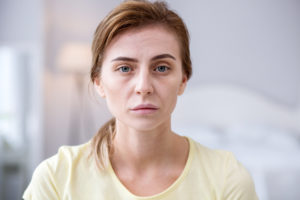
This tends to be my philosophy at Skin Essentials, rather than unattainable and unrealistic goals that feed into fears around ageing and may encourage an unhealthy fixation on impossible goals and standards.
We only need to look at our parents to get a glimpse into the future of how we will look in our 40s, 50s and older. Equally, we need only look at some of the celebrities in their 20s, 30s, 40s and 50s to see, in HD, the ageing process as it begins to take hold, and is ultimately unavoidable.
Ageing is a complex combination of genetics that seem to begin as early as our teen years for some, as well as important lifestyle choices that do not often get emphasised enough.
Additionally, even if one is genetically blessed, it is undeniable that the vast majority of factors that contribute to ageing poorly are in our hands, and based largely, on lifestyle choices:
In saying all this, it is undeniable that ageing is a fact of life, and as aesthetic physicians, we can only help improve what nature gave you, or minimise the effects of what is being lost, rather than create something that is nonexistent, given the limitations of biology.
Additionally, oestrogen seems to be the main driver of skin quality as well as bone health in men and women. For this reason, among others, it is currently thought to be the main driver of ageing in women being at an accelerated pace compared to men, as early as our 30s to middle age compared to men, in whom oestrogen is a more gradual decline, with ageing related changes more obvious in middle to old age.
So what are some of the telltale signs of ageing you should be watching out for? I have a list of 9 from some of the earliest you may notice, to some later ones.
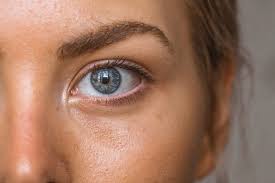
The area around the eyes is among the first to show signs of ageing. In some, there is a congenital (ie they are born with it) defect of the tear trough, such that they seem to have dark circles/ hollows from as early as childhood; in someone with skin of colour, this may be more accentuated due to pigmentation.
Nonetheless, as early as our teens, this area may begin to age. Eyelid skin is thin and delicate and may begin to sag over eyes, giving a heavy, hooded effect as early as our 30s.
Loss of fat under the eyes together with this delicate skin can enhance the appearance of dark circles or prominent vessels in fairer skinned individuals, giving rise to a perpetually “need to sleep” and tired look that invites unsolicited comments.
The eye socket also begins to change with age, with less bony support for the eyeball and surrounding structures, leading in some, to bulging of the fat in this area, eyebags and loose skin, which can be distressing for many.
From our childhood years, we convey our feelings and desires with our faces. Humans are among the most expressive species and it is for this reason, compared to other mammals, that we have the most mobility in our faces, especially our mid faces, ie the parts of our faces visible when we are facing someone else.
Over decades, we take smiling, laughing, frowning, crying, being surprised and more for granted, and as a means to express our emotions. Repetitive muscles movements cause the skin overlying these muscles to move.
As early as our 20s, as collagen production begins to drop, with ongoing muscle use, we begin to notice fine lines and wrinkles, initially present when we are animated, and over time, like tyre tracks on an unmarked road, grooves begin to appear due to repeated similar movements.
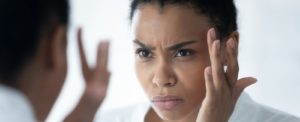
Lack of sun protection as well as unhelpful choices such as regular sun exposure (intentional or otherwise) also contributes to collagen breakdown, as does smoking and a poor diet. This leads to a deterioration in the quality of our skin, leading to the appearance of lines and wrinkles, larger pores and uneven texture all of which age us.
“Young bodies may be thin, but young faces are full of fat.”
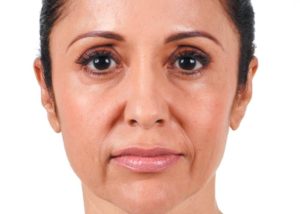
As early as our 30s, we begin to lose some of the fat pads in our faces that are evenly distributed, giving us a smooth and beautiful appearance. Commonly, areas we begin to lose the fat are around our eyes, as discussed above, but also, our temples, giving us a “peanuthead” appearance, as well as our cheeks, exaggerating the under-eye hollows, and in many cases, making us appear gaunt, tired and sad.
Cartilage continues to grow, and in areas such as our nose, combined with drooping tips as well as volume loss in our midface ie cheeks, our noses can begin to look disproportionately bigger.
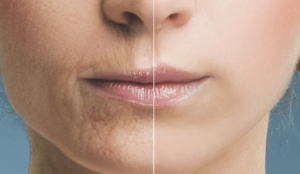
A patient in her late 40s recently said to me, “I seem to be losing my lips”. It is a common complaint. Around our 40s, we begin to lose bone around our maxilla, the bone around our nose and upper teeth, and this contributes to a number of changes, including drooping/ sagging of the skin between our nose and upper lip, inturning of the upper lip itself into the mouth as a result.
With continued collagen loss, coupled in women with declining oestrogen levels, skin becomes thinner, drier and as a result, more wrinkly/ crepey.
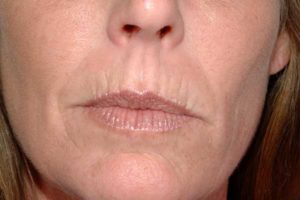
This leads to “smoker’s lines”, even in non smokers around the mouth, which can contribute to an aged appearance
A patient in her mid 30s recently said to me, “people keep asking me if I have a lolly in my mouth.” Her osteopath also reportedly asked her to see a doctor in case it was a “lymphatic drainage issue”
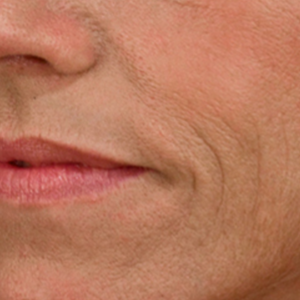
What she is in fact describing, is sagging of parts of the skin as the face begins to lose volume, leading to small pouches of skin and fat in areas of the face as it begins to deflate and sometimes, creates shadows in the process. Crepey and sagging skin around the mouth and chin, coupled with bony loss of the chin itself, can lead to crepey skin in this area that is hard to remedy, along with creating shadows that can lead to other lines (marionette lines among others) and create a sad, aged-looking face.
Just as young faces are full of evenly distributed fat, older faces begin to lose fat in the areas where they kept us looking youthful, cherubic and rejuvenated, and begin to move south,
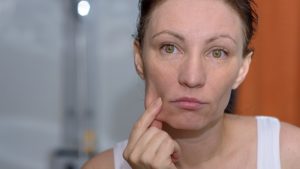
typically to the lower face and neck, leading to jowls and chin fat and contributing to a loss of definition of the jawline, resulting, in women, especially, in a more square facial appearance which can masculinise many women and contributes to the inverted triangle of youth.
It is often striking to me when I see patients that many of us regularly and from a young age, focus on anti ageing strategies for the face, but stop at the neck, such that as early as our 30s and up, we begin to notice a marked difference in skin texture and quality between these two parts of our body.
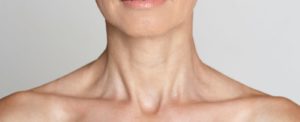
None of us wants a youthful face attached to an old, crepey and sundamaged neck. So what happens to contribute to the dreaded turkey neck? There are two main causes:
Over time, with the ageing process, collagen and elastin are lost from skin, as on the face except the skin of the neck is usually much thinner, leading to a crepey, sagging appearance and a sag that is not helped by sag from the lower face.
Additionally, the platysma is a sheet of muscle in the neck/ throat that over time, becomes weak in some areas and spasm in others, leading to platysmal bands, leading to unattractive vertical lines called platysmal bands, one of the first signs of ageing in the neck.
So there you have it, all the possible list of ageing related issues to look forward to!
The good news? Many of these can be slowed or even treated with a combination of treatment modalities, time and patience, if one is so motivated, and one of the biggest reasons why I focus on full face rejuvenation and holistic facial balancing; our face is what we lead with, and for many of us, it contributes heavily to our self esteem and our sense of self, even if we do not work in a beauty/ aesthetic environment where it is heavily focused on.
Given also that more of us will continue to work to our 70s and beyond, it makes sense to invest in our faces as much as we do the rest of us. After all, fair or not, we often decide in the first few seconds of meeting someone, whether we want to work with them/ buy from them, and feeling confident about putting our best face forward is an investment in ourselves and our future.
Ready to get started? Book here to discuss how we can help you start your journey!
| Monday: | By agreement only |
| Tuesday: | CLOSED |
| Wednesday: | 10:00 - 17:00 |
| Thursday: | 10:00 – 18:00 |
| Friday: | 09:00 – 17:00 |
| Saturday: | 09:00 – 15:00 |
Skin Essentials will reopen the week beginning 11th October 2021.
Per NSW government regulations, only double vaccinated patients will be served when we reopen and we will be checking vaccination certificates for all patients upon booking. This requirement may change as of December 1st, and we will advise you accordingly.
Please email us (contact@skinessentials.com.au) or text us (0413174654) your vaccination certificate as soon after booking as you can. We will not be able to see anyone for treatments or confirm appointments without this.
In the interest of full disclosure, transparency and patient safety, all patient facing staff will be fully vaccinated by the time of reopening. Please read our reopening FAQ for more information.